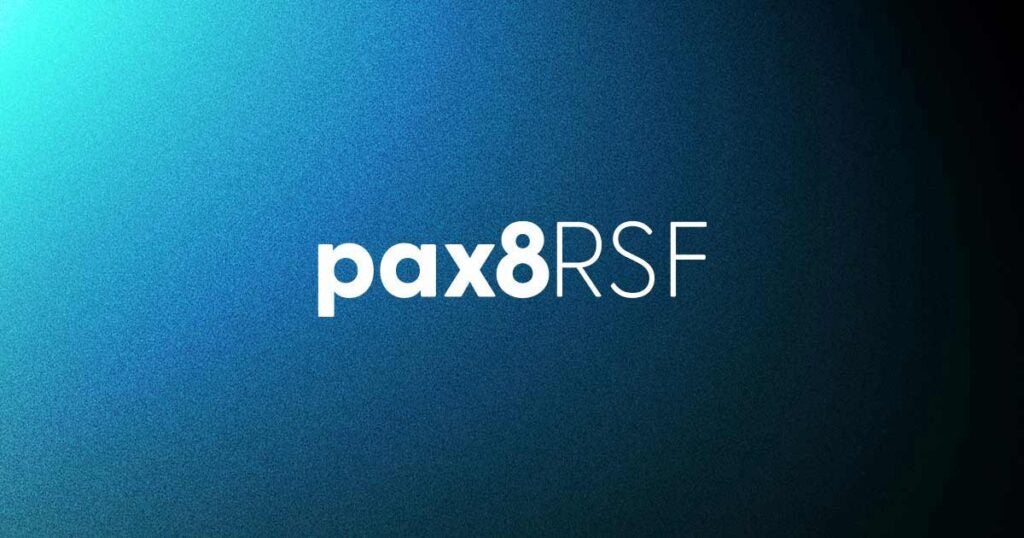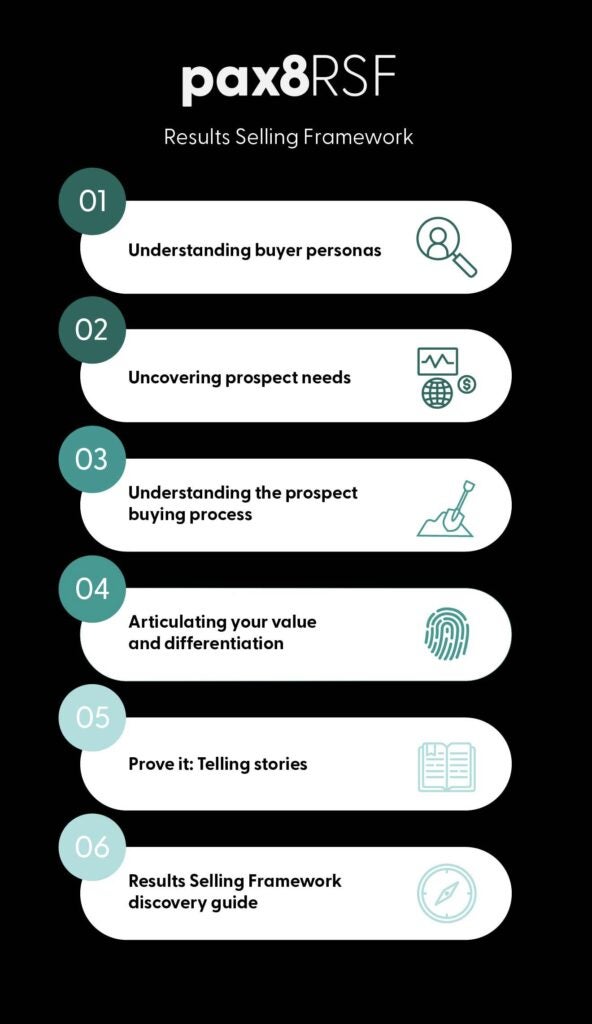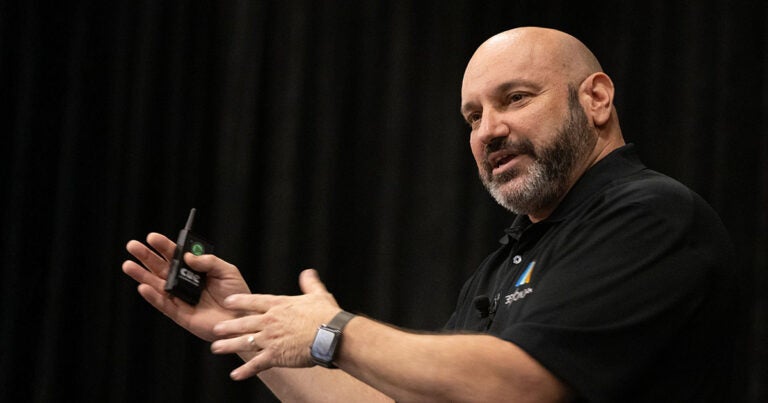Many Managed Service Providers (MSPs) start as accidental entrepreneurs. Their passion for technology fuels their business growth and fosters a network of like-minded individuals. This network becomes a powerful asset, providing not just support and resources but also potential clients. However, a key hurdle for MSPs, despite their technical expertise: closing sales. For many MSPs, the stereotype of pushy sales tactics can feel forced and apply a perceived pressure to authentic connections and relationship building, which are crucial for successful sales.
The truth is that strong, consistent sales center on relationship building – not manipulative, gimmicky, or high-pressure sales tactics that no one enjoys. This powerful shift in perspective is essential for both new and established MSPs as they seek to grow or scale their business.
While established MSPs with dedicated sales teams understand the importance of sales, they face a unique challenge: a gap between their technical and sales teams. Their technical teams, while highly skilled, often lack sales expertise and the ability to identify deeper business needs. This creates a communication barrier, as not everyone speaks the same “sales language.” This disconnect hinders the development of a consistent, cross-functional sales process, leading to missed opportunities in identifying new business challenges or selling additional services.
By bridging this gap, both new and established MSPs can leverage their technical expertise and network to achieve sustainable growth. A simple framework can guide MSPs in identifying key client opportunities, streamline their sales processes, and ensure they meet their business goals.
Beyond just selling: SMBs choose partners who tune in to their business needs
The Results Selling Framework (RSF) is a proven sales process that fosters building relationships through transparency and accountability by empowering cross-functional team members to speak the same language while authentically engaging with customers. This framework was built to guide natural conversations and overcome the resistance to “selling.”
“Our MSP partners consistently rank ‘sales’ as one of the biggest challenges to growing their business. Because of their extensive technical expertise, they often default to pitching products and services, rather than asking questions about the client’s business challenges. This is why Pax8 Academy invested in creating the Results Selling Framework. We want to equip our partners with proven sales skills that deliver new clients and revenue.”
– Rex Frank, VP of Pax8 Academy
Custom-built for adaptability, the RSF equips everyone – from technical business owners with no formal sales training to established sales teams – to achieve new levels of growth and success in sales. It equips teams with the skills needed to move beyond one-size-fits-all sales practices and centers on a strong foundation for engaging prospects or customers on a deeper level.
RSF empowers each team member to ask conversational questions that uncover customer challenges, as well as the resulting impact on their business. Equipped with this knowledge, the team is enabled to articulate the unique value proposition offered while building a relationship with the customer as a trusted expert.
The roadmap for success
The Results Selling Framework has six easy-to-follow steps:
- Understand the buyer personas
Each sales conversation is unique, requiring a nuanced and multifaceted approach. Learning how to identify which buyer persona the team is engaging with helps determine what language to use and the types of questions to ask to quickly determine buying style and needs.Think of buyer personas as detailed profiles of ideal customers. These profiles capture business challenges, goals, and preferred communication styles. Understanding buyer personas personalizes the sales approach to resonate with each specific audience.By tailoring language, question types, and approach to each buyer persona, customers feel a stronger connection, openly address specific pain points, and ultimately convert into more loyal clients.
- Uncover prospect needs
Engaging buyers requires asking questions that help to genuinely understand their needs, challenges, and gaps. Fine-tuning language and mastering the art of effective discovery questions ensures clarity of buyers’ true needs and the positive business outcomes they’re seeking – before solutions are offered.By asking open-ended questions that encourage conversation, team members go beyond surface-level concerns and delve deeper to understand the “why” behind the customer’s needs and challenges. For example, instead of simply asking, “Do you have any security concerns?”, a more effective question might be, “Can you describe any recent security challenges you’ve faced and how they’ve impacted your business?”Actively listening to the customer’s responses and asking personalized follow-up questions paints a clear picture of their current state, desired future state, and gaps to achieving this state. This valuable insight informs a tailored sales approach that demonstrates targeted offerings to directly address specific needs, overcome challenges, and pave the way for achieving their desired outcomes.
- Understand the prospect buying process
Most buyers progress through a defined decision-making journey, often referred to as the buyer’s journey. This journey involves stages such as awareness, consideration, and decision.Matching the sales approach to what your customer is looking for enables you to provide the right insights, information, and support at the right time. This allows the team to see critical elements within the sales process that greatly influence outcomes, such as project timing, potential objections, and who needs to be engaged to make a final decision. Tailoring the approach for each prospect greatly improves successful close ratios while also effectively forecasting the sales pipeline.For example, if a prospect is just becoming aware of a need for improved IT services, MSPs might focus on providing educational content that highlights common challenges, specific gaps to avoid, or industry trends to consider. This fosters trust and opens opportunities for new client conversations. Conversely, if a prospect is actively evaluating different MSPs, the approach shifts to showcasing targeted actions that demonstrate the unique value proposition offered and services that directly address their specific needs, challenges, or gaps.
Yet building rapport alone will not close more sales. The RSF has been designed to inspire conversations that challenge the status quo and drive movement throughout the buying journey. To expand sales, MSPs must uniquely position themselves as a trusted advisor and partner.
- Articulate the company’s value and differentiation
It is essential to position the company’s strengths in clear and simple language. Communicating a unique value and aligning it with the prospect’s decision-making process fosters a sense of partnership. When you demonstrate an understanding of your ideal client’s decision-making journey, you position yourself as a valuable partner. You speak their language, addressing their pain points head-on and offering a clear path to a solution.The key to unlocking this powerful communication tool lies in a few crucial steps. First, embark on a journey of self-discovery. Identify the company’s unique strengths. What sets you apart from the competition? Is it a specific area of technical expertise? Does customer service go the extra mile? Perhaps a personalized approach resonates with clients seeking a customized solution.Once you understand the strengths, translate them into tangible benefits to use during sales conversations. Don’t get bogged down in technical jargon; focus on the positive impact the services have on their business. How does the company’s expertise translate into increased security, improved efficiency, or cost savings? Clearly communicating these benefits paints a picture of how an MSP can make customers’ lives easier and their businesses stronger.
- Prove it by telling stories
Nobody likes to sit through a sales pitch, but everyone enjoys a good story. Companies that communicate their value and offerings through personalized accounts will make a genuine connection that is more memorable than numbers and bullet points.Sharing impactful success stories bridges the gap between promises and results. Highlight real experiences and outcomes like increased uptime, reduced security incidents, and cost savings. Include testimonials that reflect your dedication to client success and reinforce your commitment to exceeding expectations. - Lean into the RSF Discovery Guide
Bringing all these skills and best practices together helps make the sales process clear, concise, and more successful. The Results Selling Framework is a simple, replicable model that builds a foundation with practical principles for execution across a team. By taking the RSF Academy course, you’ll get our Discovery Guide as a resource.
Multiple ways to learn the RSF with Pax8
Pax8 Academy offers flexibility to choose the ideal RSF learning path for MSPs:
- On-Demand Learning: Jumpstart sales performance with free online courses and on-demand sales resources.
- Peer Groups: Gain support from MSPs facing similar challenges in a curated, supportive, non-competitive atmosphere.
- Instructor-Led Courses: Take your sales to the next level with interactive, expert-led live training.
- 1:1 Sales Coaching: Get a customized roadmap for success, personalized guidance, and accountability from MSP coaches.
To explore the options, visit the Pax8 Results Selling Framework Hub.
Start building lasting relationships today
MSPs are transforming sales success with the Results Selling Framework. Remember, it’s not just about selling; it is about building lasting connections that lead to mutual growth and success.






